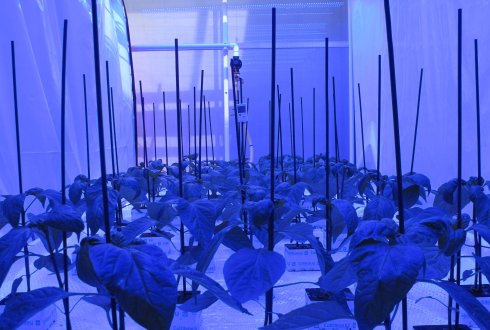Wageningen, The Netherlands
September 16, 2014
By Wageningen UR Greenhouse Horticulture

The use of assimilation lighting in greenhouse horticulture has increased by 10% per year during the past decade, leading to a considerable increase in electricity consumption. LED lighting systems have a variety of advantages, ranging from their small size, high energy conversion efficiency to the option to emit specific wavelengths.
In the EU project HI-LED, Wageningen UR Greenhouse Horticulture cooperates with Hortilux Schréder and a number of international partners to develop new strategies to make optimal use of LED lighting.
Effect of light colour
LED lighting systems currently used in greenhouse horticulture consist of red LEDs with 5-10% blue LEDs. However, little is known about the possibilities to steer plant performance with specific light colours during the day. In the HI-LED project we will investigate the effects of red, blue, green, yellow and white light and a mixture of red and blue light on the growth and development of tomato and pepper plants. For this we will grow the plants under LED fixtures supplied by Hortilux, under a background of natural light. We will closely look at elongation, development rate, light absorption and the processing of light in photosynthesis. This should reveal how individual light colours affect basic plant processes, and how this can be utilized in lighting recipes.
Lighting strategies
Light requirements for plants might not be constant during the day. Therefore the next step will be to develop and test dynamic lighting strategies. A dynamic lighting strategy might aim to stimulate stomatal opening in the morning, light absorption during the afternoon and assimilate distribution at the end of the day with different parts of the spectrum. In this way, plant performance might be more efficient than under a continuous spectrum. At the end of the project we will use signals from the plant itself to indicate whether or not it requires light. This is still to be realized, but we will try to bring it into practice as soon as possible, for the benefit of greenhouse horticulture.